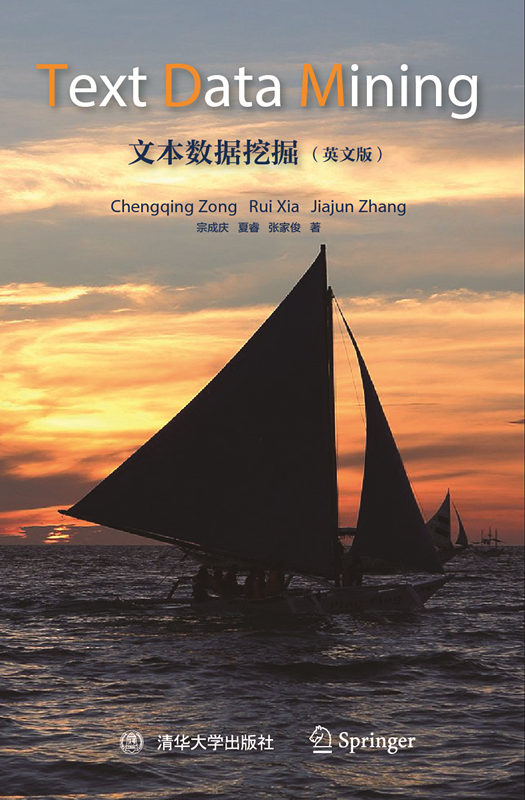





作者:宗成庆、夏睿、张家俊
定价:119元
印次:1-2
ISBN:9787302590293
出版日期:2021.10.01
印刷日期:2022.05.24
图书责编:孙亚楠
图书分类:学术专著
《Text data mining》 offers thorough and detailed introduction to the fundamental theories and methods of text data mining, ranging from pre-processing (for both Chinese and English texts), text representation, feature selection, to text classification and text clustering. Also it presents predominant applications of text data mining, for example, topic model, sentiment analysis and opinion mining, topic detection and tracking, information extraction, and text automatic summarization, etc.
Chengqing Zong is professor at the National Laboratory of Pattern Recognition (NLPR), Institute of Automation, Chinese Academy of Sciences. He serves as chairs for many prestigious conferences such as ACL-IJCNLP, IJCAI, IJCAI-ECAI, AAAI and COLING, etc., and served as associate editors for prestigious journals such as TALLIP, Machine Translation, etc. He is the President of Asian Federation on Natural Language Processing and a member of International Committee on Computational Linguistics.
Preface With the rapid development and popularization of Internet and mobile communi- cation technologies, text data mining has attracted much attention. In particular, with the wide use of new technologies such as cloud computing, big data, and deep learning, text mining has begun playing an increasingly important role in many application ?elds, such as opinion mining and medical and ?nancial data analysis, showing broad application prospects. ¡¡Although I was supervising graduate students studying text classi?cation and automatic summarization more than ten years ago, I did not have a clear understand- ing of the overall concept of text data mining and only regarded the r...
1 Introduction 1
1.1 The Basic Concepts 1
1.2 Main Tasks of Text Data Mining 3
1.3 Existing Challenges in Text Data Mining 6
1.4 Overview and Organization of This Book 9
1.5 Further Reading 12
2 Data Annotation and Preprocessing 15
2.1 Data Acquisition 15
2.2 Data Preprocessing 20
2.3 Data Annotation 22
2.4 Basic Tools of NLP 25
2.4.1 Tokenization and POS Tagging 25
2.4.2 Syntactic Parser 27
2.4.3 N-gram Language Model 29
2.5 Further Reading 30
3 Text Representation 33
3.1 Vector Space Model 33
3.1.1 Basic Concepts 33
3.1.2 Vector Space Construction 34
3.1.3 Text Length Normalization 36
3.1.4 Feature Engineering 37
3.1.5 Other Text Representatio... 查看详情



 电子书
电子书
 在线购买
在线购买
 分享
分享







